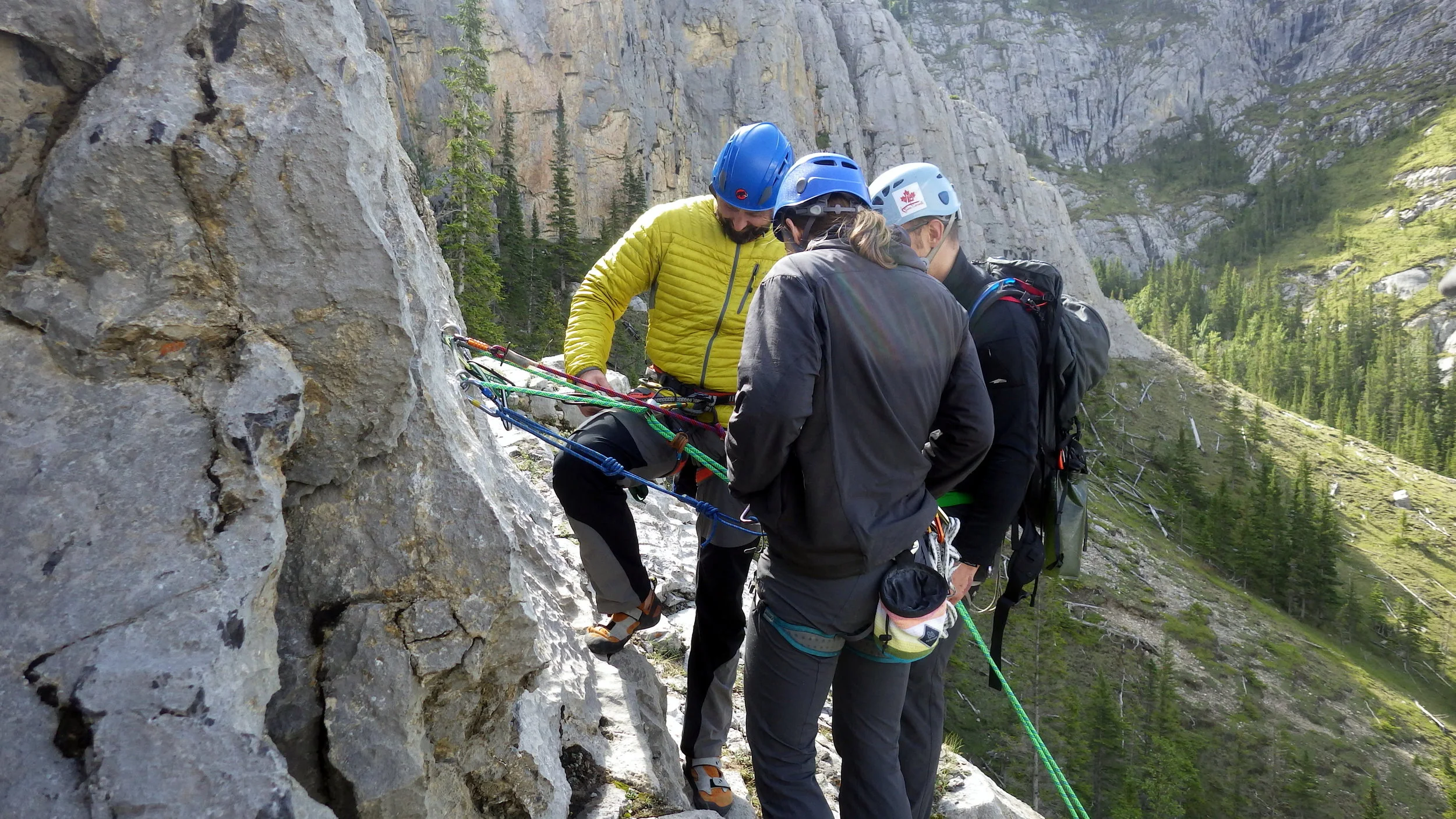Are you an experienced multipitch climber? Do you climb a bunch on trad gear and feel comfortable teaching others how to do it? We’re considering offering courses in multipitch efficiency and trad gear use this summer. We’d like to offer something unique to our membership, and a volunteer-run course would be an excellent opportunity for our members to develop their skills under your kind tutelage! The two courses would be:
Multipitch (Sport) Climbing
Overall, this course is intended to take a sport climber with outdoor experience and help them get on multipitch sport routes, which seem to be a hot topic at the moment. At the end of the course, students should be competent in the following:
-
Belaying from above (using a belay plate in “guide mode”)
-
“Helping” a second through a tough spot where they are stuck (mechanical advantage hastily built onto the belay)
-
Lowering a climber from the above setup (scenario of a climber having fallen at a roof)
-
Belay station management (how not to waste time faffing about)
-
Lowering vs. rappelling down routes
-
Lowering techniques
-
Multipitch rappelling with a group (stacked rappels)
At the end of the course, students should be enrolled in a rock rescue course (being offered by the Section through a professional instructor). Note that the skills presented in this course can also be applied to multipitch trad climbs with bolted stations.
Introduction to Traditional Climbing

Franchesca Louise Photography facebook.com/themodernmonster/
This course is intended for skilled sport climbers who would like to climb well-established traditional routes. Note that this does not include the construction of traditional anchors; the assumption is that climbers will start out on climbs with bolted anchors (at crags or on well-traveled multipitch routes). This course would also not include the dark arts of piton craft, since their use is generally restricted to routes high in the alpine where fixed stations are not present. At the end of the course, students should be competent in the following:
-
Placement techniques for nuts
-
Placement techniques for SLCDs (cams)
-
Placement techniques for tri-cams and other clean protection devices
-
Extending runners on pieces that are susceptible to “walking” or shaking out
-
How to judge the relative strength & stability of placements
-
Planning protection locations in advance
Students should be given ample opportunity to place gear on top rope, and then lead, preferably at a crag with a good variety of traditional climbs.
Expectations for Instructors
It should be noted that the expectations of instructors are greater than that of a trip coordinator. Instructing involves the explicit transfer of knowledge. Students will go out after the course and apply the skills taught. If skills were incorrectly delivered (out of date, inconsistent), or if there are gaps in the student’s knowledge that they are unaware of, a dangerous situation will arise. We ask that instructors have extensive experience and be confident that their knowledge is current best-practice in the climbing community. It is paramount that instructors deliver a planned curriculum, and that students leave the course with a clear knowledge of their own limitations. If you would like to instruct for the Edmonton Section, we’d love to have you and will be forever grateful for your contributions! We just ask that you understand the expectations before stepping up.
Benefits to Instructing:
There are several benefits that the Section offers to volunteer instructors:
-
Your costs are on us. We cover your share of carpool fuel costs, and your camping fees for the course duration.
-
Under the club’s course subsidy policy, you can earn points toward your own skill development. See the policy document for full details!
-
We often run “train the trainer” sessions with an ACMG guide, funded in part by the course fees collected. As an instructor, you will be invited to future sessions.
-
The largest benefit of all is the warm fuzzy feeling that you get when you see your students excel. You have the potential to be a big part of several people’s personal development, and the impact can be huge!
If you are interested in instructing (or co-instructing with someone more experienced) either of these courses this summer, please contact me at chair@accedmonton.ca. Please include a description of your abilities relevant to the course you would like to instruct, and also include any relevant instructing that you have done, either in the outdoor industry or otherwise.
Thank you to all of you for volunteering for the Edmonton Section! I look forward to seeing you around!
Craig Hartmetz
Chair, Edmonton Section


